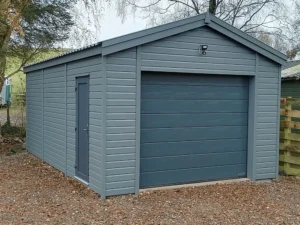Why Collaboration Matters in the Electrical Utility Industry
Collaboration is critical in the electrical utility industry; top priorities are reliability, safety, and efficiency. Utility companies must work closely with their suppliers, contractors, and partners to ensure that essential materials and services are delivered on time and meet industry standards. Strong communication and shared goals help reduce risks, prevent delays, and improve the overall resilience of electrical networks.
A key aspect of this collaboration involves working with specialized partners, such as a conduit supplier, whose products support the safe and efficient power distribution. When utilities and suppliers align their strategies, they create stronger networks capable of adapting to new technologies, meeting regulatory demands, and supporting growing community energy needs.
Key Players in Supplier Networks
Electrical utility networks consist of diverse entities, each providing expertise—manufacturers supply high-quality equipment; distributors ensure swift delivery; service providers handle engineering, testing, and maintenance; integrators connect teams with technology; procurement specialists coordinate these roles to meet field needs. Strong relationships, especially with critical suppliers, enhance resilience during outages by enabling faster recovery and maintaining service. Regular alignment with key players and cross-functional coordination ensures operational efficiency, compliance, and safety.
Steps to Strengthen Supplier Collaboration
- Open Communication: Schedule regular meetings and use collaborative platforms to ensure clear, continuous dialogue between utilities and suppliers. Quick feedback loops prevent misunderstandings from escalating into costly delays.
- Shared Standards: Establish mutually agreed-upon benchmarks for quality, technical compatibility, and safety practices. This minimizes risks and ensures process consistency across supply chains.
- Digital Integrations: Implement supply chain management and tracking systems that allow real-time inventory updates, order statuses, and delivery schedules. These digital tools enhance responsiveness and reduce manual workload.
- Joint Training: Organize cross-company safety drills, workshops, and new technology demonstrations. Shared education efforts strengthen technical know-how and foster team loyalty among all stakeholders.
These proactive steps break down barriers and establish lasting alliances that can withstand fluctuating supply conditions, evolving industry standards, and unforeseen disruptions like natural disasters.
Innovations in Supplier Relations
Utilities are embracing innovative technologies to streamline supplier relations and drive performance improvements. Adopting digital procurement platforms has increased transparency throughout the supply chain, while AI-powered demand forecasting enables better resource planning. Supplier performance dashboards have become invaluable, helping teams monitor on-time deliveries, quality, and responsiveness in real time. Tools like predictive analytics can warn of shortages weeks in advance, allowing utilities to adapt well before service is impacted. These process enhancements deliver measurable improvements in speed and risk reduction, ushering in a new era of efficiency.
How Data Drives Better Connections Between Teams
Accurate and accessible data is the glue that binds teams across engineering, purchasing, and logistics. Utilities empower stakeholders to track orders, monitor inventory, and coordinate timelines with significantly fewer errors by centralizing information in shared online portals. Real-time insights from these platforms streamline workflows, improve planning accuracy, and enhance accountability at every stage. Effective data management also contributes to fewer supply bottlenecks and stronger operational trust in critical moments.
Measuring Success in Collaborative Efforts
The effectiveness of supplier collaboration must be measured with clear, actionable metrics. On-time delivery rates, defect counts, cost savings, and safety incident frequencies are essential indicators. Advanced utilities additionally track procurement cycle times and gather satisfaction feedback from their teams to monitor relationship strength. Consistent performance reviews drive continuous improvement and pinpoint areas where strategies may require adjustment, ensuring that both short-term objectives and long-term partnerships remain on track.
Final Takeaway
Collaboration in the electrical utility industry is about smooth operations and building resilient, future-ready networks. By fostering strong supplier relationships, embracing innovation, and leveraging data-driven insights, utilities can minimize risks and enhance efficiency. Prioritizing collaboration ensures reliable power distribution, safer practices, and the agility needed to meet evolving energy demands.
Also Read-Kickstart Your Tech Career with a Diploma in Information Technology at Sigma










